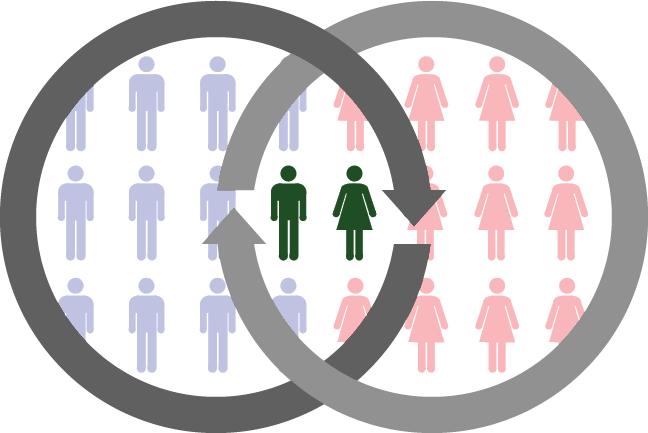
By David Sturt and Todd Nordstrom
Let’s just call it evolution. Take a quick trip to the other side of town, the other side of the country, or even the other side of the world, and it quickly becomes evident that our lives have drastically evolved due to technology. Gone are the days of walking into any old restaurant and hoping for the best meal. Today we ask our smart devices where we can find the best burritos. Need a good Pilates class? We quickly check Yelp reviews. And, instead of filing those business cards we collected in drawer, we simply go back to the office to connect on LinkedIn. And, here lies the problem. Many of us, especially leaders who aren’t looking for a job, aren’t doing a very good job putting our best profile forward.
“Tacky photos, incomplete sentences, poor spelling or grammar, and a lack of effort placed on who you are and what you stand for vs. just focusing on what you’ve accomplished in your career, are a few turn-offs for our team,” says Brian Mohr, cofounder and managing director of executive search firm, Y Scouts, based in Scottsdale, Arizona. “LinkedIn reveals how people present themselves to the world of business.”
Mohr’s statements, as an executive recruiting professional, may not be all that surprising, until you consider the level of employee his firm is looking to recruit—the rock star leader who probably doesn’t have their next career move on their radar.
Watch on Forbes:
“People don’t clean up their resumes until their looking for new work,” adds Mohr. “But, the world has changed now. Companies aren’t recruiting people based on whether or not they need a job. They’re looking for the best people who align with their purpose.”
Recommended by Forbes
Probably as guilty of not tending to our own public LinkedIn profiles as many of you reading this article, we wondered how much it really mattered. If we’re happy at our jobs, use LinkedIn primarily for networking and an information source, how much time do we really need to invest in updating our profiles?
“It’s more than just a tool to find jobs or recruit people,” says Dennis Koutoudis, CEO and founder of LinkedSuperPowers. Koutoudis is an internationally recognized LinkedIn profile makeover specialist. “Google your own name. If you have a LinkedIn account, most likely it’s one the first things that pops up. For many people it might be the only thing that shows up.”
Koutoudis, in a recent interview where he dove deep into many areas of social media, told us that, although most of his work focuses on teaching people and companies how to leverage LinkedIn to reach a certain goal, like to get a job or expand your network, many professionals are overlooking the most basic reason for ensuring your profile is updated and professional—that it’s probably the biggest online representation of you.
Consider this for a second. If you’re a sales professional, your clients will look at your profile. If you meet someone at a conference, they’ll likely peruse your profile. Your former classmates might be checking out your career online. The parents of your kid’s friends might be trying to figure out what you do for a living. If you’re single, well, you’re profile might give away just as much about you as your Facebook page. And, if you’re the CEO, there’s a good chance your employees are looking at the way you present yourself to the world.
What are the four critical things leaders need to know about their own profile?
- “An incomplete profile can be perceived in many ways,” say Koutoudis. “People might think you were too lazy to finish it, you don’t care about it, or they may simply think your entire profile is your entire career—that there is nothing more to add. That’s the first thing you need to do. Complete your profile.
- “Is it professional?” he asks. “Whether or not you’re looking for a career change, it’s your responsibility to assume that someone might be looking to hire you—as an employee or a vendor.”
- “Ensure your profile fully optimized,” adds Koutoudis. “LinkedIn is a powerful tool. But if you don’t take the time to understand how it can help you, you’re wasting opportunity. For example, you can optimize your profile to tell others why you’re on it, what you’re interested in achieving by being on it, and how and why you wish to be contacted on it.”
- “Finally, be honest with yourself,” Koutoudis adds. “Do you present yourself in a unique and understandable way online? Read through your profile and really critique yourself. Would your profile appear impressive and interesting to you? Would you want to talk more to you, recruit you, or take your advice after reading your own profile? Many people created their profile years ago at the request of someone they knew to link up. Maybe you didn’t take it seriously back then. Maybe you did it while watching television. And, maybe it’s time to revisit.”
No, you may not think that your profile needs to be updated, because you might not be in the market for a new job. However, it is important to understand that numerous people are looking at your profile for various reasons. “We use many tools to search for the best candidates for our clients. LinkedIn is one of them, “ added Brian Mohr. “It always puts a smile on my face when we make a phone call to someone we think might be a perfect hire, and they are shocked that we know so much about them already. Of course the first thing they tell us is that they didn’t apply for any jobs. We know you didn’t. We found you.”


